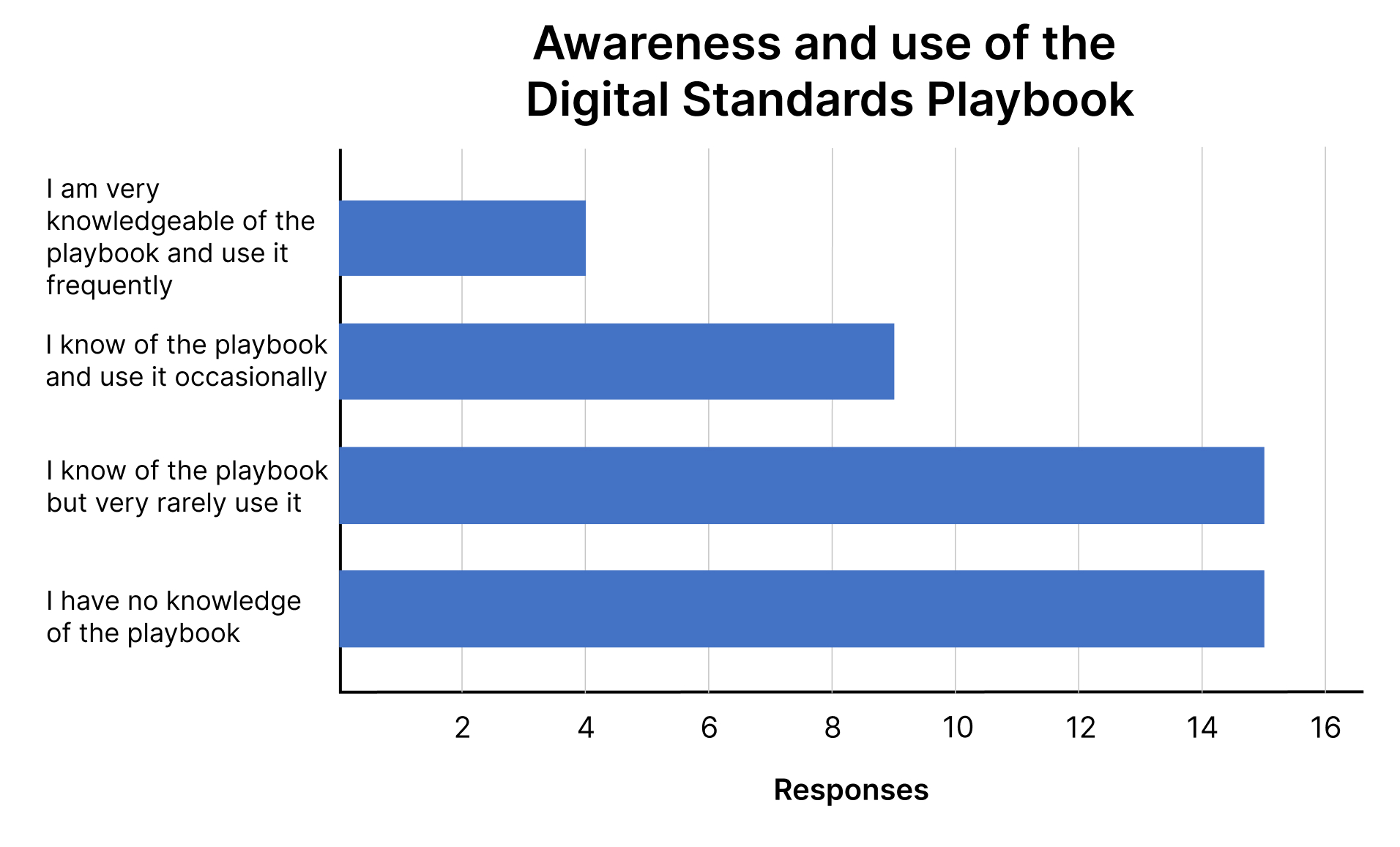What we learned about awareness, use and gaps of the Digital Standards Playbook

For our first survey, we wanted to learn whether people know about the Government of Canada Digital Standards playbook and use it. We also wanted to get feedback on our proposed changes. Here's what we've heard so far.
Awareness and use of the playbook
We wanted to find out if people know about and use the playbook to figure out where to focus our efforts. So far, most people who took the survey knew about the digital standards playbook.
Although there is a high awareness of the playbook, we saw that people are not using it very much. Only 4 out of 43 people (9%) said they used the playbook frequently.

Figure 1
Figure 1 - Text version
Awareness and use of the Digital Standards Playbook
- 4 people answered "I am very knowledgeable of the playbook and use it frequently"
- 9 people answered "I know of the playbook and use it occasionally"
- 15 people answered "I know of the playbook but very rarely use it"
- 15 people answered "I have no knowledge of the playbook"
Themes missing from the playbook
In our survey, we gave examples of information we could add to the digital standard "Design with users." For example, why the standard is important, relevant policies, and sample activities in each service design phase. We asked people if they thought this information would be helpful.
Here are some of the things we heard that should be in the playbook:
Guidance on how to design with users:
- how to convince executives to design services with users
- how to know if a solution is the right one
- when and how to experiment
- how to design services in government
- how to regularly measure success
- how to define user groups
- how to plan and organize user research and testing
- how to find and compensate people who participate in user testing
- how to collect and use data to improve services
- how to apply this guidance no matter which process teams use to improve services
Information on:
- usability and accessibility practices
- terms associated with digital work; for example, "digital" and "design"
- what kinds of government services the digital standards apply to
We also received suggestions to:
- make sure the playbook is written in plain language
- not put too much in the playbook
- make sure the playbook is designed for the audience it's intended to
- explain how to define users and make sure that user testing reflects the user population
Changing the playbook isn't enough
Many people shared that an update to the playbook isn't what they need to help them understand and use the digital standards in their work. Instead, they wanted help removing obstacles that make it hard to follow the standards.
Here are some examples of the obstacles that people said need to be removed:
- the policy requirements are unclear, and no tools exist to make them easy to find or understand
- it's not clear if the digital standards are mandatory
- there is no governance to ensure everyone follows the digital standards
- the rules for managing projects and finances in departments make it hard for teams to follow the digital standards
- teams don't have enough training and mentorship to learn how to use the digital standards
Share your feedback
The feedback we've received so far has been very helpful. If you haven't shared your thoughts yet, you still can. We are still collecting feedback!
We will be using the survey responses and comments to do some more thinking about what teams need to help them design services. Stay tuned. Our next update will explain how we're using your feedback in shaping guidance on the digital standards.
Digital Standards Playbook project updates
Site footer
- Date modified:
